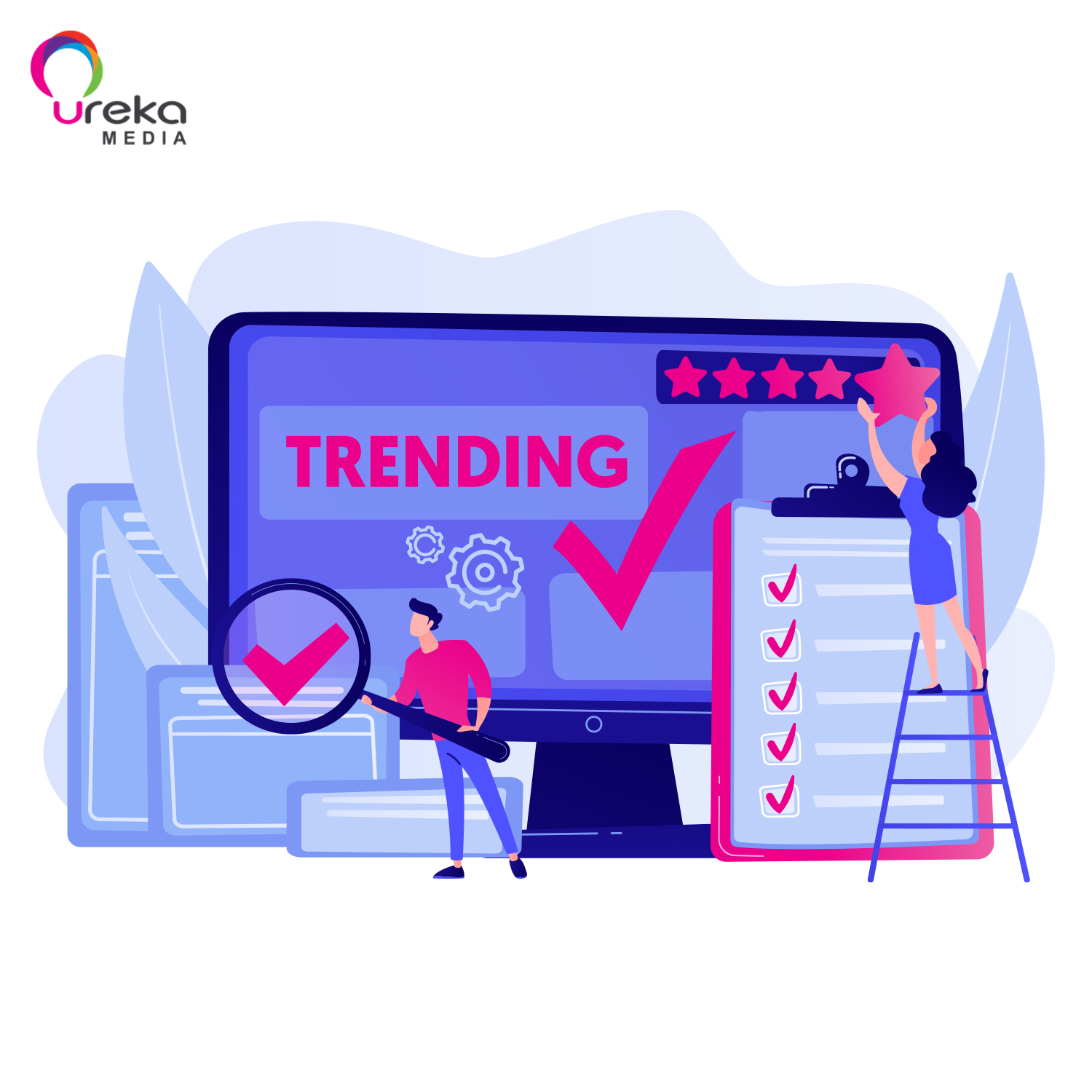


Make people SEE and REMEMBER the brand



Get people to UNDERSTAND and
WANT the brand



Change people's BEHAVIOR and
get them to CONVERT



Take care of people to CONVERT OFTEN and
ADVOCATE the brand
U News
Retargeting From the Inside: The CPC vs CPM Debate
As one of the hottest areas in online advertising, retargeting is getting a lot of attention. One point that’s long been in the spotlight is the issue of providers’ business models and profit margins. More specifically, how it relates to CPC vs CPM business models. Today we want to cover various payment structures and the pros and cons each provide. We’ll do this by asking questions about what each model is and how they’ll affect your bottom line. As you’ll see, the payment model will affect more than how monthly invoices are being calculated.
How can you maximize the return on your retargeting campaign?
Any marketer looking for a retargeting solution needs to understand that their provider’s business model will impact many aspects of campaign execution. The way retargeting providers create profits for their own businesses affects the advertising strategies they create as well as how campaigns are managed.
By now everyone likely know what retargeting is. Just in case, here’s a quick recap: Retargeting enables advertisers to execute an ad campaigns that focuses on customers who have already shown interest in a product, but have not converted yet. It’s easy to understand retargeting in the context of an ecommerce store. People visit the site, look at various products, and perhaps even add an item or two to their shopping carts. Unfortunately, 98% of visitors don’t buy on their first visit. With retargeting, sites can drive sales by serving ads to those who engaged with the site, but haven’t purchased yet.
And retargeting’s results are spectacular. Don’t take our word for it; according to Ratko Vidakovic at MarketingLand, the click-through-rate for retargeted advertisements is three to ten times higher than the average ad’s CTR – but that doesn’t tell the whole story.
What every smart marketer ultimately cares about is the return they get on their ad budget, and for this reason it is important to start by understanding what you’re paying for. There are two primary media buying formats – pay for impressions (CPM) and pay for performance (CPC or CPA). Let’s examine the business model of each and ask how they affect clients’ returns.
The First Model: Pay for Impressions / CPM
What is the pay for impressions business model?
CPM stands for Cost Per Mille, or, in plain English, cost per one thousand ad impressions. With a CPM solution, the retargeting provider gets paid based on the number of ad impressions served regardless of campaign performance. CPM solutions are typically offered by a Demand Side Platform (DSP) – a solution that lets marketers self-manage their media buys.
In a DSP scenario, the advertiser will typically create a relatively simple strategy for retargeting their customers. The main method to optimize campaigns is to bucket different types of users into predefined groups, then assign different creative and different bid amounts to each group based on the marketer’s assumptions. For example, in a typical ecommerce campaign, the marketer will likely set a strategy that bids more aggressively on site visitors that have added products to their shopping cart, compared with those that only visited the site’s home page. The motivation is quite obvious: The higher the likelihood that the user will click and convert, the more the marketer is willing to spend to serve that ad impression.
The following charts shows how bucketing users into segment can dramatically impact Click Through Rates. As you can see, visitors that left items in the shopping cart click on an ad 5x more than users that only viewed the site home page. Therefore, a smart marketer that is buying media on a CPM basis should be willing to spend 5x more to serve ads to those who abandoned their shopping cart.
Unfortunately for most eCommerce sites, segmenting users solely by place in the funnel is far from optimal since it fails to account for many other factors that affect likelihood of conversion. For example, amount of time spent on site, or the number of visits a user had in a given time frame. Determining the most appropriate bid amount while taking into account all factors is far from trivial. An interested marketer would still need the right tools in place in order to capture, analyze and identify the right mix of factors in order to optimize for best results. Doing it manually is practically impossible; therefore, those running with manual optimization will typically have a rather limited strategy.
How will the pay for impressions business model affect your retargeting campaign’s return?
Every business wants customers to see their products and to learn about their services. At its worst, a CPM strategy accomplishes this – but absolutely nothing else. The DSP gets paid regardless of whether customers clicked the ads or purchased products. At its best, a DSP solution provides clients with the ability to control many aspects of the campaign and adjusting it in accordance with their business understanding. Done right, clients can become proficient in extracting more value from the DSP by experimenting and optimizing their campaigns over time, in the same way they would if they were managing a search campaign. Therefore, sites with simple structure and limited number of products can benefit from the control a DSP provides, and optimize the campaign for their business objective rather easily. However, as the number of products the site sells increase, adjusting the strategy manually is less than ideal, wich is when CPC based strategy can have the upper hand.
The Second Model: Pay for Performance
What is the pay for performance business model?
While there are many performance models, the most common is CPC, or Cost Per Click. In this model, providers only get paid if and when users click on the ads. Similarly, CPA (Cost Per Action) is a model where the provider is only paid when an advertisement generates a sale or another form of agreed upon action. Providers that offer this form of payment, essentially provide a form of a “risk-free” advertising opportunity to their clients. Pay for performance isn’t about creating a massively visible ad campaign that everyone who uses Facebook or Google will see – instead, it’s a targeted strategy that’s driven by results.
To provide a bit more context, a CPC provider will assume the risk for non-performing ad impressions. While clicks don’t always translates to sales, the provider will work to ensure that money is not wasted. If 10,000 ads were served and no clicks were made, the provider won’t get paid for those impressions, therefore it’s in the provider’s best interest to reduce the number of non performing ad impressions. One can argue that the incentive of the provider and marketer are more aligned in this scenario.
How can the provider ensure that the ad budget is spent appropriately? Much like an insurance company, in order to maintain profitability a CPC provider will leverage every piece of data at their disposal to uncover those impressions that do perform. Unlike the manual segmentation method, the provider will likely leverage an automated technology to continuously examine things such as the amount of time customers spent on the site, the number of times they visited, the items they viewed, and historical sales data. The better the technology, the better the results the provider will achieve. Assuming the providers charges a fixed markup, these benefits will translate to better ROI for the client as well.
How will the pay for performance business model affect your retargeting campaign’s return?
While the benefits explained above sound like a huge win, it’s important to realize that there’s a flipside: A CPC provider will offer far less control over the campaign relative to a CPM provider. Since CPC providers gets paid on clicks, not on impressions, they won’t be enthusiastic about making changes to the campaign that adversely affect click performance. Therefore, a client that doesn’t care primarily about clicks or sales, but instead focuses more on brand messaging, might find pay for performance solutions too restricting.
How should a marketer pick a retargeting provider?
What every marketer is looking for is a retargeting provider that delivers results. Therefore, the first step a marketer must take is to define the campaign objective. This will help them determine how much control they need and what type of retargeting provider will have the most success executing their strategy.
As we’ve discussed, a CPC provider will offer limited control, but will assume ownership over campaign optimization. On the other hand, a CPM solution will deliver plenty of control, but optimization capabilities will be rather limited.
Ultimately, and regardless of the payment structure (CPM, CPC, CPA, CPX, Flat Monthly Fee), a marketer should be on top of the actual value realized from the campaign. How much money was spent, and how many additional conversions were delivered. Clearly, a CPC provider that produces many clicks but no sales should be dropped as quickly as a CPM provider that delivers many impressions but no conversions. To build a deeper analysis, the marketer should execute a lift test, which will highlight the campaign’s real incremental benefit on sales. In future posts we’ll discuss how to easily conduct such tests.
Source: http://liftquest.adextent.com/
Related Post
Recent Post


![[ALL ABOUT PROGRAMMATIC] PART 3: BASIC INGREDIENTS](https://urekamedia.com/uploads/data/uploaded/images/photo_news/800x800/news_20160630063835/programmatic-urekamedia-mediaeyes-dsp_part3.1.png)

![[PERFORMANCE BASED ADS] Six changes marketers must make after Cambridge Analytica](https://urekamedia.com/uploads/uploads_image/20180418/20180418101851_14635.jpg)








